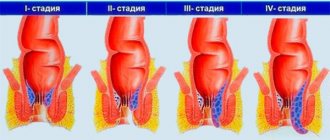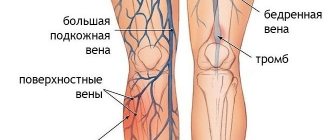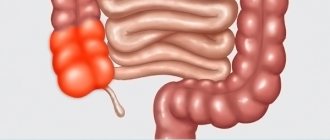Causes
To begin with, it is worth noting that the nature and causes of oncology still remain a mystery to doctors. This means that doctors make certain assumptions, but it is impossible to say that it is a specific factor that causes cancer. The primary, that is, the main causes are unknown even to science, but we can dwell in more detail on the secondary causes of cancer, that is, talk about risk factors. They can contribute to the development of duodenal cancer.
Risk factors
It is believed that cancer can occur for a number of reasons. The following causes may contribute to duodenal cancer:
- tobacco and alcohol abuse, drug addiction;
- pancreatitis, diabetes mellitus or stones in the genitourinary system;
- too frequent consumption of food of animal origin;
- genetics.
Other risk factors also include the environmental situation, chemical exposure and the influence of carcinogens. The appearance of a tumor can also be facilitated by the consumption of animal fats, because as a result, the level of cholecystokinin increases, and this in turn can lead to hyperplasia of the upper cover of the digestive tract.
Recently, researchers discovered that some components of coffee may also contribute to cancer. Therefore, excessive consumption of this drink should be added to the possible causes.
Localization location
Cancer of the descending portion of the 12-fingered colon is very common, in approximately 75% of cases. It develops from the epithelium of the common mucous membrane. Establishing an exact localization is always difficult, especially if the examination is carried out at later stages. Duodenal cancer, the first symptoms of which may not be immediately apparent, is dangerous because treatment is difficult in itself, but in the final stages a person has little chance.
The upper horizontal part of the intestine is the site of cancer localization only in 12-15% of cases. Tumors in the lower horizontal part are also called infrapapillary cancer. Its frequency is up to 10%.
Classification
Cancer of the 12 duodenum can be primary, when the tumor begins to form directly in this organ, or secondary, when the tumor grows into the 12 duodenum from other organs (usually the stomach). According to the direction of growth, the neoplasm can be:
- Exophytic – grows inside the intestine;
- Endophytic - grows into surrounding tissues.
We recommend reading: How long do people live with stage 4 kidney cancer with metastases?
According to the histological structure, the following may occur:
- Adenocarcinoma (mucosal cancer). This carcinoma occurs most often.
- Signet ring cell (signet) cancer. Mucin accumulates in tumor cells.
- Lymphosarcoma. The tumor arises from cells of lymphatic tissue and grows into the duodenum.
- Leiomyosarcoma. The neoplasm is formed from smooth muscle.
- Fibrosarcomas. Tumor formation begins from the fibrous tissue around the intestine.
- Malignant neuroma. The oncological process develops in the membranes of the nerves of the duodenum.
There may also be ulcerative sarcoma, when ulcers damage the stomach, liver cells, pancreas and liver gates, after which the ulcers become malignant, and neoplasms grow into the duodenum from several sides at once. According to localization, the oncological process can be:
- Periampullary cancer - the tumor affects the descending part of the duodenum;
- Suprapapillary cancer - affects the upper horizontal region of the intestine;
- Prejejunal cancer – located in the lower horizontal region.
In rare cases, the tumor is localized in the duodenal papilla, blocking the common excretory duct.
Symptoms
How does duodenal cancer manifest? The first symptoms are very similar to those that people experience with stomach cancer. In order to detect cancer on time, oncologists have identified three groups of possible signs.
The first group falls under the phenomenon of intoxication. Characterized by abdominal pain, loss of appetite, apathy and weight loss. There is also complete indifference to the outside world.
The second group concerns the phenomenon of obstruction. It all begins when the tumor begins to put pressure on other organs. At this time, biliary hypertension begins, the liver increases in size, and stool becomes colorless. Jaundice may occur. Doctors note disturbances in the functioning of the cardiovascular system; kidney and liver failure may occur, as well as metabolic processes may be disrupted.
The phenomenon of compression occurs in the last stages of the disease, when a person feels severe pain from the tumor pressing on the nerve endings of the pancreas.
From a medical point of view, the duodenum is a difficult organ. Not all people know where it is and how it hurts. The intestine is located immediately below the stomach on the right side, above the navel. Cancer pain can vary, much depends on the stage of the disease and the location of the disease in the duodenum. Where it is located and how it hurts, you can find out from your doctor if you suspect cancer.
Determining the disease on your own is not easy. It is impossible to detect symptoms of duodenal cancer at an early stage, since the disease is asymptomatic. But after a while a person begins to think about his health because he begins to suffer from regular abdominal pain. How does duodenal cancer manifest over time? Main symptoms include severe abdominal pain, sudden weight loss, jaundice, fever, itchy skin and loss of appetite.
X-ray examination
X-ray examination provides convincing and varied diagnostic signs of cancer or sarcoma of the duodenum.
Correct diagnosis using this method is possible in 90% of patients. The nature and features of the x-ray picture depend on the anatomical shape, stage of development and location of the cancer tumor.
The cardinal radiological signs (Fig. 3.1) of duodenal cancer are:
1) marginal or circular filling defect; 2) eroded and unclear contour of the duodenum; 3) straightness of the affected area of the intestine, weakening or absence of peristalsis in this place; 4) uneven peristaltic movements and the appearance of pendulum-like movements of the intestine; 5) changes in the mucous membrane in the form of blurriness, breaks, deformation and rigidity of folds; 6) local pain and a palpable node in the affected area.
Rice. 3.1. X-ray of the duodenum. Patient Sh., 60 years old. Duodenal cancer
A filling defect, especially in the initial period of tumor development, may resemble an ulcer with deformation of the duodenal bulb, in the center of which there is a delay in contrast.
As tumor growth progresses, the deformation increases due to an increase in the size of the filling defect, there is a long delay of contrast and food debris, and dehiscence of the pylorus. When the tumor is localized peripapillary, a spot-shaped filling defect with an uneven edge is determined in the middle of the posteromedial contour of the descending intestine.
The wall in this area becomes rigid as the tumor grows, and the folds around the nipple become deformed. Sometimes the initial sign of a tumor is the reflux of barium into the bile ducts, which is associated with insufficiency of the sphincter of Oddi.
In the early stages of the disease, tumor development is accompanied by functional disorders in the form of uneven peristaltic contractions, pendulum-like movements, and areas of spasm. Subsequently, they are replaced by changes associated with a decrease in tone and expansion of sections of the intestine located proximal to the tumor.
There is a long delay and retrograde throwing of the contrast mass. With post-bulb localization of the tumor, ectasia of the bulb and stomach develops with pyloric insufficiency. In these cases, the overcrowded bulb is sometimes mistaken for the antrum of the stomach. The superior flexure of the bowel often contains a fluid level.
Studying the relief of the mucous membrane is important in the early diagnosis of duodenal cancer. In this case, duodenography in conditions of artificial hypotension may be useful. In addition to the details of the relief of mucous deformation of the folds, under these conditions, initial filling defects of small sizes are clearly detected. Invasion of the head of the pancreas manifests itself in the form of destruction, erosion and discontinuity of the contour of the adjacent section of the intestinal wall.
The X-ray picture in the early stages of duodenal sarcoma does not make it possible to judge the nature of the tumor. Against the background of weakened peristalsis and rigidity of the affected area of the intestinal wall, the relief of the mucous membrane is usually reduced. In some cases, its folds are rough and uneven.
In the future, the X-ray picture of sarcomas, as well as with cancer, varies depending on the nature of tumor growth. Obstruction of the intestine by a tumor node is accompanied by a narrowing of its lumen, proximal to which there is an expansion and retention of barium suspension. On the contrary, with infiltrating tumor growth with damage to the muscular system, the intestinal lumen is more or less dilated. The intestinal walls lose their elasticity. Large nodes of lymphosarcoma growing outside the duodenum do not cause narrowing of its lumen.
Advanced cancer
Duodenal cancer has stage 4. At the first three, treatment can still help the patient, but at the last stage it is not always possible to help, because not everything depends on the treatment. However, such cases have happened.
It is worth talking about the symptoms of cancer in the later stages because at this moment it can provoke complications in the functioning of other organs. Most often, the disease manifests itself with general signs of intoxication. The following manifestations are also possible:
- temperature;
- dry mucous membranes;
- reluctance to eat food;
- vomiting, diarrhea, constipation, nausea;
- yellowing of the skin;
- general weakness of the body;
- psychological problems.
Even if a person ignores all the symptoms and does not want to see a doctor, it is imperative to pay attention to the following signs of the disease:
- vomiting after eating, after which it still feels like the stomach is full;
- blood in stool;
- jaundice.
It is worth noting that the signs of duodenal cancer in men are the same as in women.
Possible complications
The main complications of duodenal cancer are:
- Metastases to the liver, pancreas, lymph nodes, less often to the lungs and abdominal cavity.
- As the process progresses, the pancreas is affected, and cancer of the head of the gland often develops. Due to compression of the glandular duct by the tumor, acute pancreatitis occurs with possible pancreatic necrosis. Intestinal stenosis leads to acute intestinal obstruction.
- The tumor may ulcerate and bleed, and massive internal bleeding is possible. Bleeding may be hidden and continue for a long time, causing acute anemia in the patient.
- Tumor disintegration and perforation into the abdominal cavity with the development of purulent peritonitis is possible.
- Compression of the bile duct causes disturbances in the outflow of bile, and jaundice develops.
- Cachexia - extreme exhaustion of the body - can also be considered a complication of duodenal cancer.
Diagnostics
To cure the disease, it is very important to start treatment on time, and for this it is necessary to detect the cancer. Today, diagnosis is carried out using laboratory and instrumental methods. Testing for tumor markers for stomach and duodenal cancer will help identify cancer cells in time. It is worth noting that tumor markers are substances that promote the production of cancer cells. Diagnostics consists of three stages:
- To begin with, an analysis of pathologies and collection of anamnesis is carried out. The doctor examines the patient and palpates the abdomen. The person’s clinical complaints, such as vomiting, pain, loss of appetite, are taken into account.
- At the second stage, a laboratory test of the patient is carried out, consisting of a general blood test, urine and stool tests, a biochemical blood test and a tumor marker.
- The third stage consists of an instrumental examination.
The last stage is the most important in diagnosing duodenal cancer. The first symptoms may be erroneous or indicate another disease, but instrumental examination allows an accurate diagnosis. The doctor performs an esophagogastroduodenoscopy, during which the esophagus, stomach, bile duct and 12-fingered colon are examined. During the analysis, tissues are taken for biochemical analysis.
After this, the doctor sends the patient for a chest x-ray and contrast x-ray of the duodenum and stomach. The doctor may also prescribe ultrasound, magnetic resonance and computed tomography. At the same time, the patient undergoes examination by all specialists.
Treatment
Every year, duodenal cancer is becoming more common. It is impossible to answer how long people live with such a disease, because everything depends not only on what stage the treatment began, but also on the general health of the body, its ability to resist the disease.
Usually treatment is carried out according to the classical scheme. First, the tumor is removed surgically. Partial removal of the duodenum may be required. Surgery is recommended for people under 75 years of age, but only if there are no metastases.
After surgical removal of the tumor, chemotherapy is performed, which is necessary to consolidate the result. It is mandatory, as it guarantees the destruction of pathological cells and their proliferation.
Radiation therapy is most often performed in the early stages of the disease, when it is possible to cure the patient without surgery.
At the end or at the beginning of treatment, therapy may be required that is aimed at relieving the patient of symptoms. At first it is needed to help a person undergo treatment, and at the end it is a final measure.
Survival rate for duodenal cancer
In order to estimate survival, you need to know the stages of the process; at each stage, survival varies.
- Stage 1.
With it, the tumor has a small size of up to 2 cm. It is located on the superficial layers, does not grow in depth, and does not have metastases. It may not manifest itself clinically; for this reason, at an early stage the tumor is difficult to diagnose.
If you undergo annual preventive examinations, the tumor is detected at this stage. The survival rate for complete treatment of colon cancer is 90-98%. People are completely cured of the disease, there is no relapse. The prognosis for life and health is favorable.
- Stage 2.
The lesion becomes large in size, up to 5 cm. It grows into the submucosal layers, there is no metastasis. Early symptoms may appear: nausea, pain, heaviness in the epigastrium.
It is well diagnosed and subject to surgical and combined treatment. With timely treatment, survival rate over 5 years is high - 70-90%. Relapse occurs rarely, the prognosis for life and health is favorable.
- Stage 3.
More difficult. The tumor reaches large sizes. Affects all layers of the wall and can affect neighboring organs. Rapid tendency to metastasize and damage the lymph nodes, difficult to treat surgically.
The five-year survival rate for stage 3 cancer is 40-70%. The prognosis for life and work is not very favorable; patients are given a disability group.
- Stage 4.
The most neglected and heaviest. Large lesion size, multiple metastases, damage to neighboring organs and systems. The addition of severe complications from which the patient may die.
Survival rate up to 3 years is low, no more than 30%. It is difficult to treat and the prognosis for life is not favorable.
Surgery
Surgical treatment can have 3 options. Removal of part of the intestine is necessary in all three cases. The first situation, the most severe, occurs when the tumor spreads to the excretory duct and preudenal nipple. In this case, the doctor removes not only part of the 12-fingered intestine, but also part of the duct and head of the pancreas. If the tumor is small, a circular resection is performed, which means removing only the affected area of the organ with possible restoration. The third option is also called circular resection, but it is used when the intestine is connected end to end, which is also possible.
Forecast
A doctor can predict a patient’s future if he knows when treatment began. The following factors are very important: a person’s age, the presence of metastases and inflammatory processes in the gastrointestinal tract. The situation worsens if metastases are found in the stomach, lymphatic system and bile ducts. Possible complications can lead to malfunction of the genitourinary system. Sometimes there is stenosis of the 12-fingered intestine and regular bleeding. It is worth saying that the general prognosis for patients is unfavorable, but not hopeless. The problem is that detecting cancer in the early stages, when treatment is almost guaranteed to help, is very difficult.
To protect yourself from this terrible disease and the occurrence of cancer of any other organs, you should give up bad habits and reconsider your diet. No matter how simple the tips may seem, they really work. Proper nutrition and quitting smoking and alcohol can protect a person from a number of diseases, and not only cancer.
We learned about what duodenal cancer is, as well as everything about its course and treatment. Unfortunately, no person can be guaranteed to protect themselves from cancer. We have already talked about the importance of a healthy lifestyle, but no less important is being attentive to yourself and your body’s signals. Sometimes it’s better to go to the doctor once again and get checked.
Anatomy of the duodenum
The duodenum has one task - to receive the food mass treated with the acid of gastric juice, mix it with bile and pancreatic enzymes to prepare it for entry into the alkaline environment of the intestine.
A horseshoe-like section of the digestive tube is only 12 fingers or fingers long (in diameter), connected to the stomach by a bulb, and the pancreas is tightly adjacent to the duodenum.
The duodenal bulb is so named for its great similarity, and the folds of the mucous membrane are also like those of an onion - from top to bottom, whereas in other parts of the intestine they are predominantly transverse. In the bulb, the acidic gastric secretion mixes with the alkaline intestinal secretion and it is here that ulcers most often arise, and malignant tumors, on the contrary, rarely develop - in every seventh of all those suffering from duodenal carcinomas.
Next is the descending part with the pancreatic papilla and common bile ducts opening into it; bile produced by the liver and aggressive pancreatic enzymes enter this section. In two out of three cases, it is in this part of the duodenum that a malignant process develops.
Next come the horizontal and ascending parts, the frequency of malignant tumors also goes downwards - neoplasms in these sections are quite rare.











